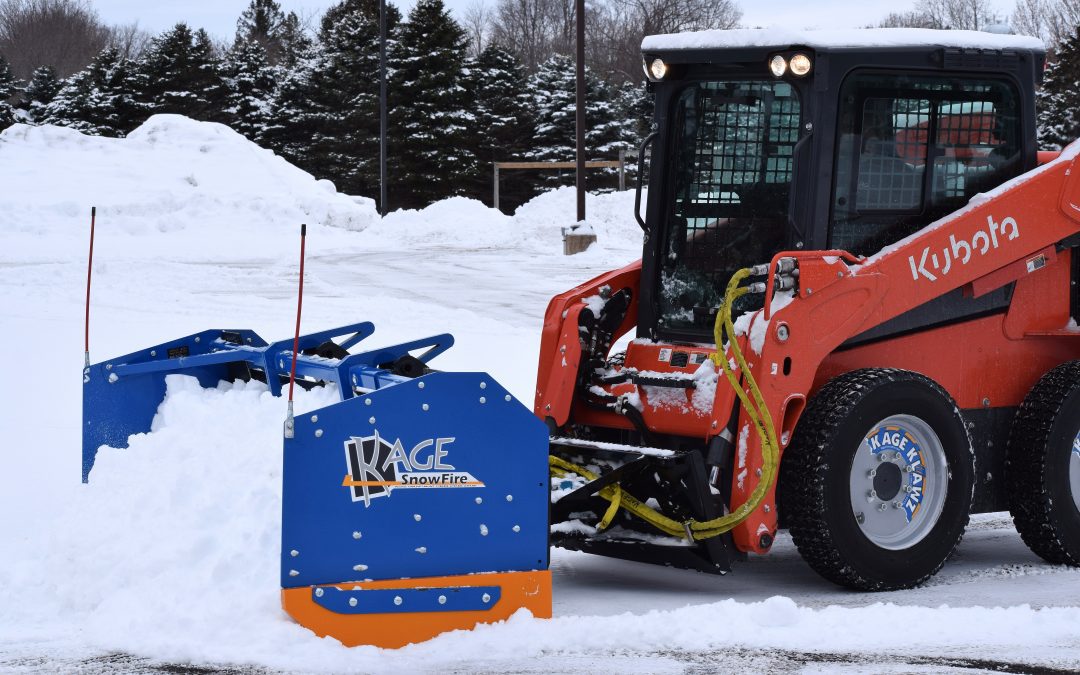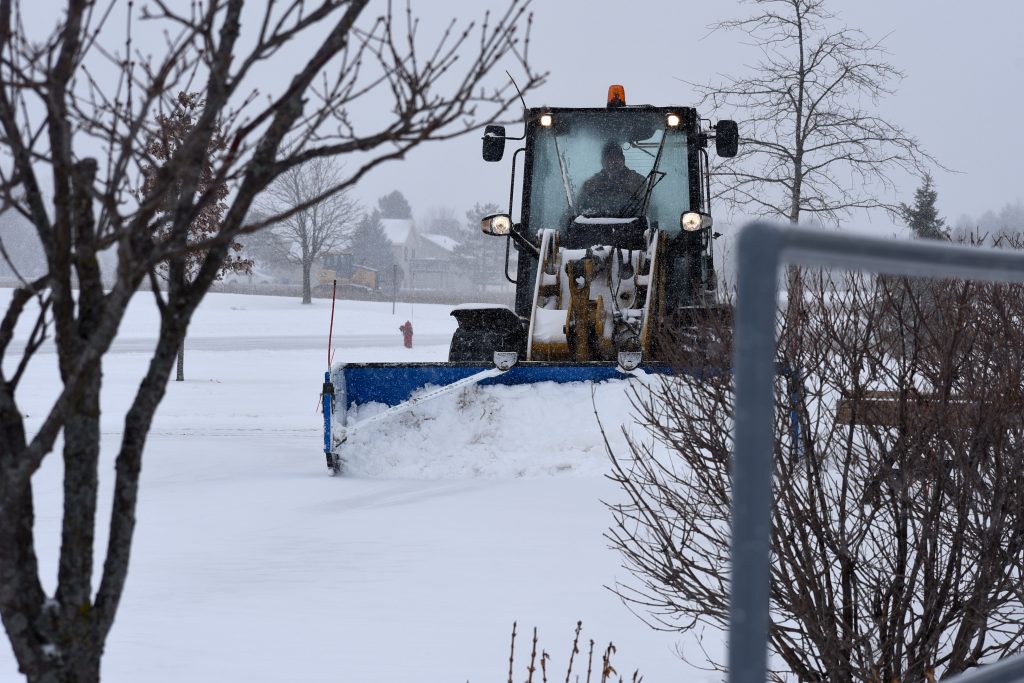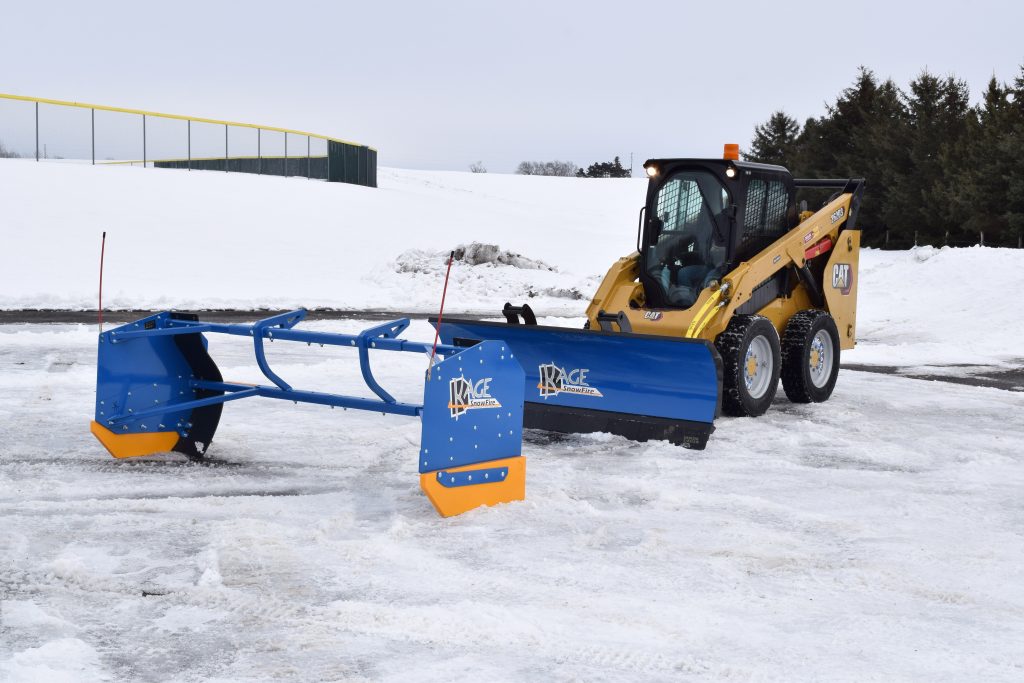When heavy snow hits, keeping lots, roads, and driveways clear is no small task. Snow pushers are one of the most efficient tools for moving large volumes of snow quickly—especially in commercial and municipal applications. But how exactly do they work, and what makes one snow pusher different from another? Let’s break it down.
The Basics: What a Snow Pusher Is
A snow pusher is a type of snow removal attachment designed to move—not throw—snow. Unlike snow plows that angle to windrow snow to one side, pushers capture snow inside a three-sided “box” and push it forward into a designated dumping area.
The main components of a snow pusher include:
-
Moldboard (Blade) – The curved face that contacts and pushes the snow.
-
Side Panels – Vertical end plates that keep snow from spilling out the sides during transport.
-
Cutting Edge – The lower edge of the moldboard that makes contact with the surface, scraping snow loose.
-
Attachment System – The mechanism that connects the pusher to a machine such as a skid steer, loader, tractor, or backhoe.
The Role of Side Panels: Snow Containment
One of the defining features of a snow pusher — and a key reason they can move so much snow so quickly — is the side panel (also called end plates). These large vertical panels on each side of the moldboard are crucial because they trap snow inside the pusher instead of letting it spill out sideways.
Imagine trying to push a pile of snow with just a flat blade — most of it would escape around the edges, forcing multiple passes to clean up. With side panels, the pusher acts like a bucket without a bottom, corralling the snow so each pass is maximally efficient.
The height and shape of side panels can vary by manufacturer and model, but their function is the same: containment equals productivity.
Moldboard Curvature: Why It Matters
The moldboard — the main face of the pusher — shouldn’t be just a flat wall. Its curvature plays a major role in how snow moves during operation.
A well-designed moldboard uses its curve to “roll” snow forward rather than just shove it. This rolling action reduces resistance, minimizes strain on the machine, and prevents snow from spilling forward over the cutting edge prematurely.
Different moldboard profiles can affect performance in various snow conditions:
-
Tighter Curves – Good for wetter, heavier snow because they encourage rolling and reduce sticking.
-
Flatter Curves – OK for light, fluffy snow that needs to be carried.
A poor moldboard design can lead to snow clumping or spilling out early, forcing the operator to slow down and make more passes.
Standard Snow Pushers with Fixed Side Panels
The most common type of snow pusher is the standard fixed-side-panel design. Here, the moldboard and side panels are permanently attached to one another, creating a rigid box that pushes snow forward.
Advantages of Fixed Side Panel Pushers:
-
Simplicity – Few moving parts, so they’re durable and low-maintenance.
-
High Containment – Excellent for large, open areas like parking lots.
-
Affordability – Generally the most cost-effective option.
Drawbacks:
-
Limited Versatility – Can’t easily windrow or back-drag (with a special accessory)
-
Clean-up Limitations – Hard to work around obstacles or tight spaces without leaving trails of snow.
Fixed box pushers are ideal for wide-open areas where the goal is to capture and move maximum snow volume in as few passes as possible.
KAGE Standard Snow Pushers
2-in-1 Systems
While standard pushers are great for open lots, they can be inefficient when you need to switch between pushing, plowing and even back dragging. That’s where 2-in-1 systems like the KAGE SnowFire come in.
The SnowFire system along with all of KAGE’s other 2-in-1 systems feature a moldboard (blade) that can connect to or disconnect from the containment box in seconds—all without leaving the cab. This gives operators the best of both worlds:
-
With the box attached – Works as a high-capacity snow pusher, containing and moving large amounts of snow.
-
With the box detached – Functions as a traditional angle plow for windrowing, back-dragging, and cleaning up tight spots.
Benefits of the KAGE 2-in-1 Systems:
-
Versatility – Switch between plow and pusher modes instantly.
-
Efficiency – Avoid downtime from swapping attachments.
-
Adaptability – Handle open areas, curb lines, and tight spaces with one tool.
This hybrid approach is especially valuable for contractors servicing mixed properties—big open lots one moment, intricate parking stalls the next.
KAGE 2-in-1 Systems
 Hydraulic Wing Plows: On-the-Fly Adjustability
Hydraulic Wing Plows: On-the-Fly Adjustability
Another alternative to fixed pushers is the hydraulic wing plow. These are similar to standard plows but have side “wings” that can pivot in or out hydraulically to create a containment box when needed.
When the wings are folded forward, they function like side panels, containing snow like a pusher. When folded back, they allow for back-dragging.
Advantages:
-
Ultimate Control – Adjust width and containment on the go.
-
Multi-Functionality – Handle both open and narrow spaces.
-
Fewer Passes – Adapt instantly to changing conditions.
Considerations:
-
Complexity – More moving parts mean more potential maintenance.
-
Cost – Generally more expensive than fixed pushers or even 2-in-1 systems.
KAGE Hydraulic Wing Plows
Choosing the Right Snow Pusher Setup
When deciding between a fixed pusher, a 2-in-1 system, or a hydraulic wing plow, consider:
-
Property Type – Wide-open areas benefit from fixed pushers, while mixed-use sites gain from more versatile systems.
-
Equipment Fleet – If you only have one machine, versatility may outweigh maximum containment.
-
Budget & Maintenance – Simpler designs tend to be less expensive and easier to maintain.
The Bottom Line
Snow pushers work by capturing and moving snow inside a containment box created by the moldboard and side panels. The side panels are critical for preventing snow spillage, and moldboard curvature determines how efficiently snow moves during operation.
While standard fixed-side pushers are perfect for high-volume clearing in open areas, more advanced options like the KAGE 2-in-1 Systems or hydraulic wing plows provide greater versatility—allowing operators to adapt instantly to different snow conditions and property layouts.
In the end, the “best” snow pusher is the one that matches your specific needs, your equipment, and the properties you maintain. Whether you’re pushing mountains of snow across a big box store parking lot or carefully clearing tight apartment complex drive lanes, understanding how snow pushers work will help you choose the right tool for the job—and get the job done faster.




Recent Comments